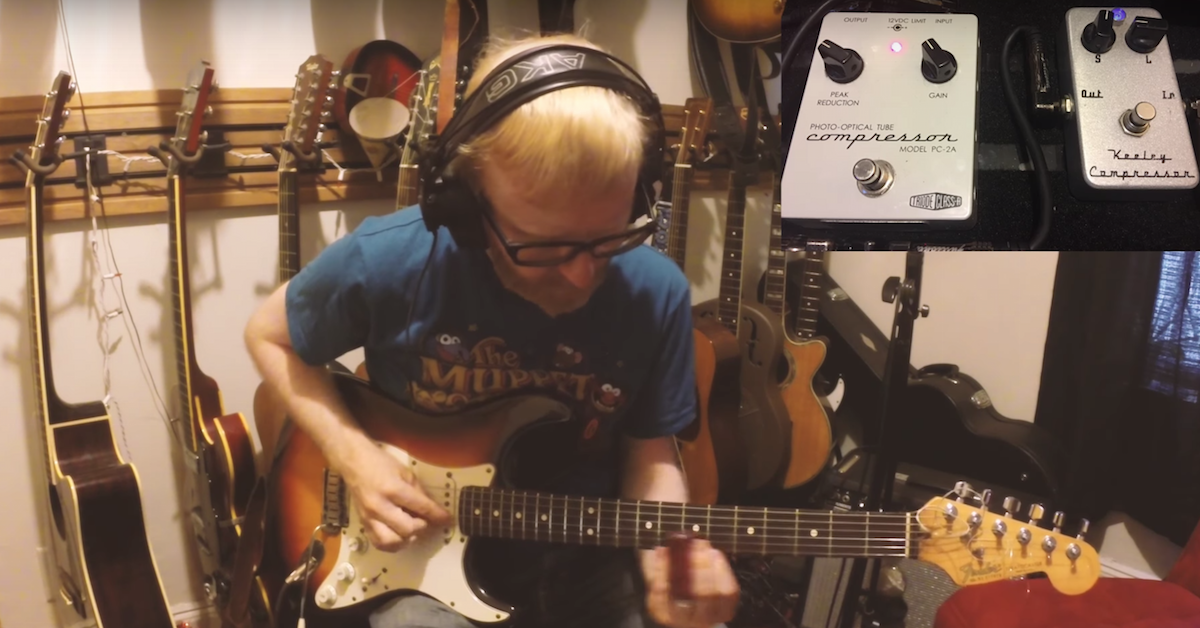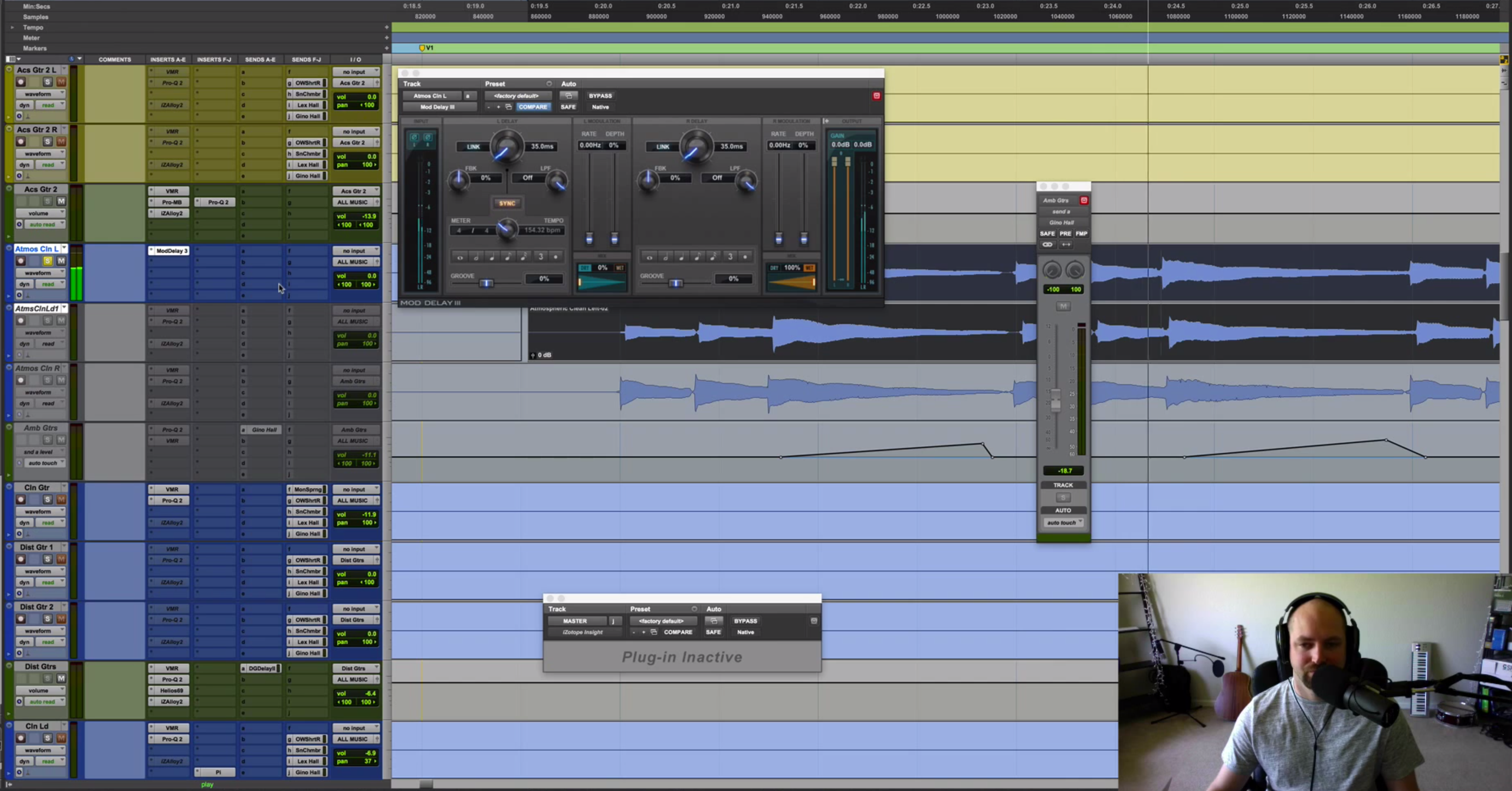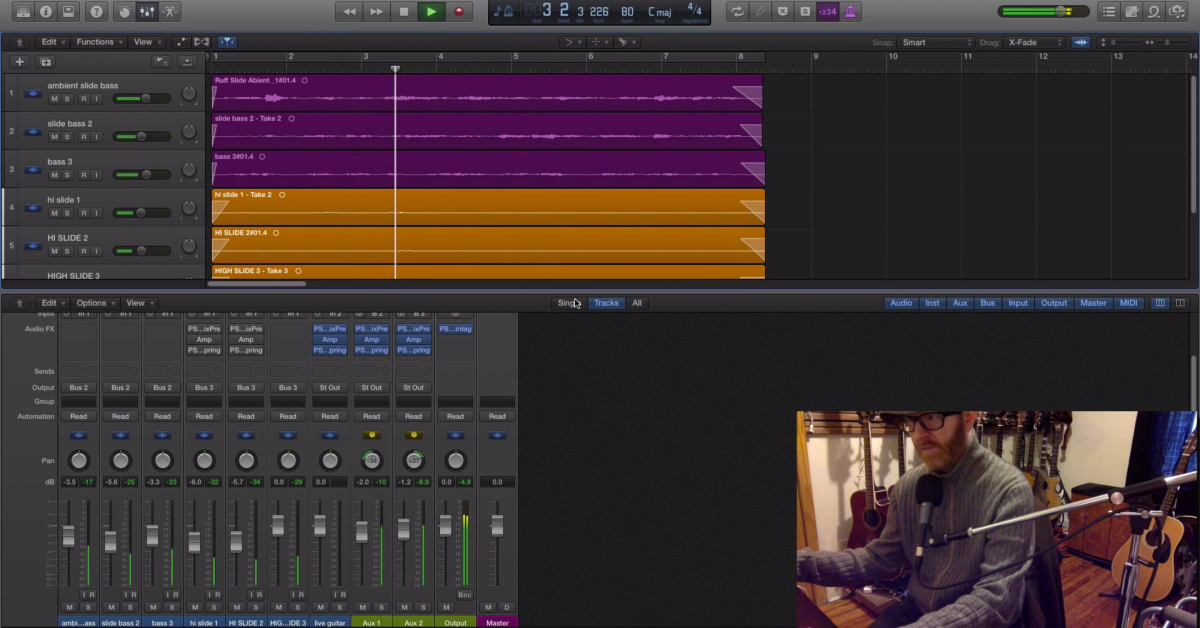Tips for Recreating a 1970’s Electric Guitar Tone
I want to talk about a session that I got hired for this week. On this particular session, I was asked to recreate a very early-to-mid 70’s guitar tone. Something in the vein of George Harrison. Maybe “All Things Must Pass” era. So I want to talk about my method, and the process to get this sound. The first key element is guitar and amp. I always start here. I feel like this is the most important relationship in getting any era of sound.
For this particular setup, I used a Fender Stratocaster. George used those quite frequently. They used a Tweed Champ. Now, these were being used quite a bit around that time. Eric Clapton was using them on Layla, and word is that when Clapton was playing on All Things Must Pass, he had his Champ there, and I know for a fact that George had a collection of tweed amps.
It’s hard to say if he used them all throughout his career, but it’s amazing when you plug into them and you turn them up how much of that George tone is there for playing slide.
I didn’t use any guitar effects. I just used a straight into the amp, and I put the amp up pretty hot, though. The tweeds go up to 12 usually, and this one I had on 10 on the bridge pickup on the Strat. I was using a glass slide. Here’s the slide I was using. It’s like an old medicine bottle. I put some felt in there to make it a little bit of a tighter grip on my finger, but it’s the same slide that Dwayne Allman used.
A slide gives a little bit more of an extra whine on top of the note that the overtones are a little different than they are with metal, and in general I prefer them, but also for this George type tone, I really like them a lot.
From there, I put two mics on it for the session, as I usually do for clients and I’m doing web sessions. I used a 57 and a ribbon. You can easily capture this sound with one mic.
I double tracked it. Now, double tracking is a really important part of this process, because he did that a lot, and in fact, was a pretty popular technique in the 1970’s.
So, I double tracked them, and I was careful not to play them exactly the same, because I think with recording to tape in that time period, they didn’t spend as much time to make sure that every single slide vibrato was an exact duplicate.
We’re going to talk about the signal chain. I’m using the UAD Apollo, but if you don’t have one, no sweat, because you can use analog hardware gear if you have it, or you can use plug-ins from Waves or Slate.
For preamps, I’m using the UAD 1073. I sometimes will use the high end just to boost a little bit. The tweed Champs have a tendency to be a little dark, which people don’t expect. They only have one knob on them, it’s the volume knob, and you turn it up.
Often I find that I need to push the front end a little bit. I will often put a low cut filter around 60Hz. Otherwise, I don’t really mess with it too much. I try to get it working from the amp. I do use the tape plug-in. This is the Studer A800. You could also use Slate’s tape plug-in.
I don’t really hit it too hard. I’m not looking to get the tape to saturate a lot and get a lot of overdrive from it. I’m more trying to get some of the sweetness from it that 70’s recordings had.
On these guitar tracks, I did use a little bit of the 1176. I don’t overcompress on these tracks, I just basically want to get a little bit more sustain out of the notes, so I have it setup so that there’s plenty of attack that comes through. I’m not trying to control that so much as I am the sustain of the note, and get a little bit more length out of it, though I’m pretty gentle with that. Then it just goes into Pro Tools and I record it as is.
Another important component to getting this sound is double tracked guitars. Now, they were doing it a lot in the 70’s, and it’s all over the Harrison material, but also a whole lot of other bands around that era.
When you’re double tracking guitars from this time period, it’s important to not try to do an exact duplicate. Modern recording techniques, everybody likes to have an exact duplicate, and everyone tries to get every nuance, every bend, every slide, everything so that it’s a dead on copy.
For this era, you just kind of get in the ballpark, and sometimes the notes aren’t exactly the same, or they start and end a little differently from each other, and this will really help you to get some of that 70’s vibe if you’re going for that thing.
Let’s listen to a little bit of it.
[electric guitar]
I’m going to solo one of these so you can hear what it sounds like alone.
[electric guitar plays, left panning]
Together when they’re double tracked, you get a little bit of chorusing that happens from it, and it’s really lovely. Check this out.





